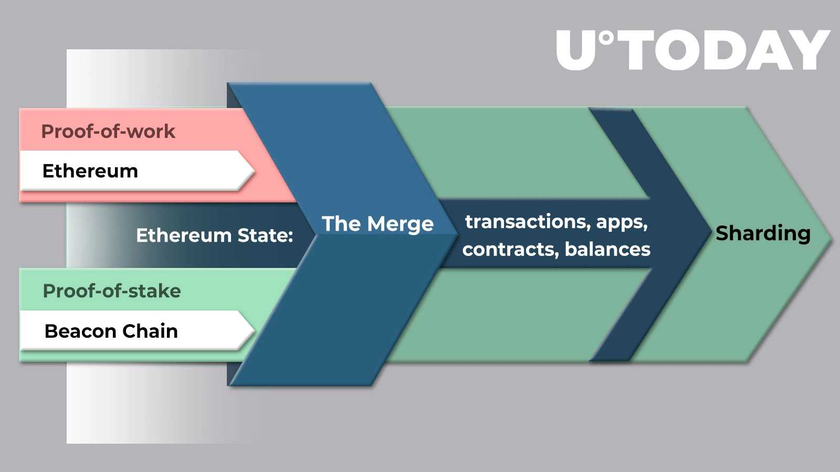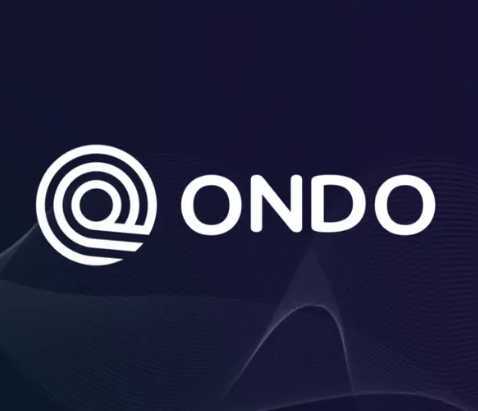Ethereum on Proof-of-Stake: Comprehensive Guide to The Merge
This guide explains what changes in Ethereum (ETH) with The Merge activation and why it is big deal for entire Web3 segment
On July 15, 2022, Ethereum core developer Tim Beiko suggested Sept. 19 as the “tentative date” for The Merge activation in Ethereum (ETH) mainnet.
As such, Ethereum (ETH) is putting the final touches on its hotly anticipated upgrade that will put an end to Ether proof-of-work (PoW) mining.
Inside Ethereum Merge: Why is #2 blockchain migrating to proof of stake?
Ethereum (ETH) inches closer to The Merge upgrade, i.e., migration from a proof-of-work (PoW) consensus to a proof-of-stake (PoS) one. It is set to make the largest smart contracts network more resource efficient, inclusive and eco-friendly.
Why is The Merge so important for the Ethereum (ETH) blockchain and Web3 sphere as a whole?
The Merge will replace proof-of-work (PoW) consensus with a proof-of-stake (PoS) one, by which Ethereum (ETH) network integrity will be secured by stakers instead of miners;
It is a first in crypto history in which a mainstream protocol radically changes its consensus design;
Ethereum Merge has already been activated in testnets Kovan and Sepolia; Goerli activation will be the dress rehearsal before mainnet;
Proof-of-stake (PoS) consumes less energy, reduces a network’s carbon footprint and makes it more decentralized;
Once Ethereum (ETH) proof-of-stake is rolled out, migration toward sharding will be the next step.
For the first time, Ethereum’s specifications for proof-of-stake (also called Ethereum 2.0, but Ethereum devs recommended avoiding using this name in Q4, 2020) were unveiled more than two years ago. What is Ethereum?
Ethereum (ETH) is the first-ever blockchain (decentralized network) with smart contracts support. It launched in mainnet in July 2015. Ethereum (ETH) was invented by a number of cryptocurrency developers; Vitalik Buterin and Gavin Wood are the best known of them.
Ethereum (ETH) was intended to address the main bottlenecks of Bitcoin (BTC) and other early cryptocurrencies. Bitcoin (BTC), Litecoin (LTC), XRP and all first-gen cryptocurrencies were only suitable for value transfer.
Ethereum (ETH) established itself as a general-purpose decentralized computer. Its smart contracts (software programs on Solidity) are used in thousands of decentralized applications: decentralized finance (DeFi) protocols, marketplaces for non-fungible tokens (NFTs), blockchain-based games and so on.
Ethereum’s native cryptocurrency is dubbed Ether, or ETH. Ether is the largest altcoin; only Bitcoin (BTC) surpasses it by market capitalization.
What is proof of stake?
Proof of stake (PoS) is a class of blockchain consensus algorithms in which validators vote on the next block before adding it to the chain. Proof of stake is considered an improvement over the proof-of-work algorithm thanks to its resource efficiency, eco-friendliness and better decentralization parameters: to join staking, there is no need to purchase expensive mining equipment. There are chain-based and BFT-based proof-of-stake (PoS) systems.
Proof-of-stake systems rely on stakers in their operations: every validator should “stake” (freeze) his/her tokens to guarantee his/her commitment to the integrity of the protocol. By Q3, 2022, Ethereum’s rival, Cardano (ADA), is the largest proof-of-stake system.
As such, to join Ethereum’s proof of stake, a crypto enthusiast should stake at least 32 Ethers (ETH) or almost $50,000 by press time. Two months before the mainnet release of Ethereum’s proof of stake, 13,125,461 Ethers are staked in its “deposit contract,” or over $20.6 billion.
Ethereum activates The Merge: Most crucial update for crypto in 2022
Technically, Ethereum (ETH) started its journey to proof of stake in December 2020 with the launch of deposit contracts and the activation of the so-called Beacon Chain, a basic proof-of-stake (PoS) coordination mechanism. In September 2022, its entire validation structure will migrate to proof of stake (PoS).
The Merge: The Basics
At its core, The Merge is the procedure joining the existing Ethereum (ETH) transactions execution layer — the Ethereum (ETH) mainnet we have known and loved since 2015 — with Beacon Chain as its new consensus layer. Currently, the ecosystem of Proof-of-Work (PoW) miners is a consensus layer; Beacon Chain solves this issue.
Thus, Beacon Chain with Deposit Contract — the storage of all Ethers allocated for staking — will be “injected” into the Ethereum (ETH) mainnet. Beacon Chain will be responsible for processing all network data, including account balances, transactions and so on.
Beacon Chain becomes the engine of block production; proof-of-stake validators will be responsible for processing the validity of all transactions and proposing blocks. At the same time, the new system will keep the entire transactional history of the old Ethereum (ETH).
The Merge: The Testnets
To ensure a smooth transition to proof-of-stake (PoS) consensus, Ethereum (ETH) core developers activated The Merge in a number of closed and public testnets. Since December 2021, Ethereum (ETH) enthusiasts have emulated The Merge specifications in Kintsugi and Kiln purpose-made testnets.
Both Kiln and Kintsugi were specially launched to stress test Ethereum’s (ETH) transition to proof of stake. In Q1, 2022, they allowed developers to detect synchronization issues and put some final touches on the post-Merge codebase. Also, developers tried a brand-new “shadow fork” mechanism as in testing The Merge.
In Q2-Q3, 2022, Ethereans activated The Merge in public testnets Ropsten and Sepolia; Goerli testnet will be “Merged” in August 2022.
The Merge: The Timeline
Here is the timeline of the most crucial milestones on Ethereum’s road to The Merge:
June 30, 2015: Ethereum (ETH) launched in mainnet on a proof-of-work consensus;
Q2, 2019: Ethereum (ETH) developers propose Casper as a high-level implementation of how the blockchain can migrate to proof of stake (PoS);
Early March 2020: Vitalik Buterin, with co-authors, releases GASPER, a more advanced implementation of Beacon Chain;
November 20, 2020: Ethereum 2.0 Deposit Contract launched with 32 ETH minimum stake; Ethereans started injecting staking liquidity;
December 1, 2020: Beacon Chain launched as parallel network to Ethereum’s (ETH) mainnet;
October 28, 2021: Beacon Chain underwent Altair upgrade; ETH price spiked to all-time high;
Q1, 2022: Ethereum (ETH) implemented The Merge in Kintsugi and Kiln testnets, “shadow forks” quietly activated;
June-July 2022: Ethereum (ETH) Merge activated in public testnets Ropsten and Sepolia;
July 15, 2022: The Merge activation in mainnet tentatively scheduled for mid-September by coordinator Tim Beiko.
The Merge: The Next Steps
Once The Merge upgrade is live in mainnet and Ethereum (ETH) is running on proof of stake (PoS), the Shanghai update will be its first hard fork in the new consensus. Shanghai will change some aspects of UX/UI, upgrade EVM and reduce gas costs for end users. Also, native execution of BLS operations by Ethereum Virtual Machine will be added.
Last but not least, in the coming months, Ethereum (ETH) will most likely activate sharding. The blockchain will be split up into a network of shards, or interconnected sub-chains. Not unlike NEAR Protocol (NEAR) and Harmony (ONE), this update will improve the performance and throughput of the Ethereum (ETH) mainnet.
Bonus: Will The Merge affect the Ethereum (ETH) price?
As The Merge is the most radical upgrade for Ethereum (ETH) tokenomics, let alone technology, many ETH holders and potential investors are wondering whether it will somehow affect the Ether price.
Typically, every major upgrade is a powerful short-term catalyst for altcoins’ prices. Moreover, with Ethereum’s (ETH) transition to proof of stake, ETH holders will be incentivized to lock their riches for staking. This, in turn, will significantly reduce selling pressure.
Bottom line
Ethereum (ETH), the largest smart contracts network, will replace proof-of-work consensus with a proof-of-stake one on September 19, 2022, with The Merge mainnet activation.
This update is the result of three years of R&D efforts by Ethereum (ETH) developers and one of the most crucial technical changes in crypto’s entire history. Ethereum (ETH) mining will be replaced by staking as the way to add blocks to the mainnet.
Migration to proof of stake makes Ethereum (ETH) more resilient to centralization efforts, eco-friendly and resource efficient. #Ethereum News
https://u.today/ethereum-on-proof-of-stake-comprehensive-guide-to-the-merge






























